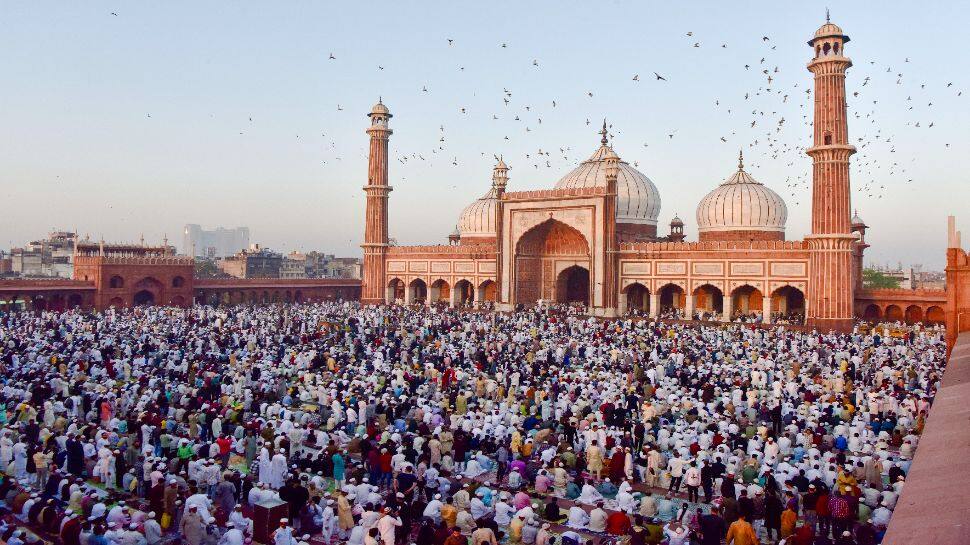 |
|
Eid al-Adha, a profoundly sacred event in Islam, is rapidly approaching, its commencement intrinsically linked to the sighting of the crescent moon. This sacrificial festival, observed on the 10th day of Dhu al-Hijjah, the last month of the Islamic calendar, witnesses Muslims worldwide engaging in the symbolic act of animal sacrifice, a tradition steeped in historical and spiritual significance. The event holds immense spiritual weight within the Islamic faith, marking the culmination of the annual Hajj pilgrimage to Mecca, a journey undertaken by millions of Muslims seeking spiritual renewal and divine blessings. Eid al-Adha commemorates the unwavering faith and obedience of Prophet Ibrahim (Abraham), who, in a supreme test of devotion, was willing to sacrifice his son in accordance with God's command. Divine intervention, however, spared his son, replacing him with a ram for the sacrifice, a testament to God's mercy and the ultimate triumph of faith. The significance of moon sighting in determining the date of Eid al-Adha arises from the Islamic calendar's reliance on a lunar system. Months within the Islamic calendar commence with the sighting of the new moon, necessitating the meticulous observation and verification of the lunar crescent. Religious scholars and local committees in South Asia, including India, Pakistan, and Bangladesh, undertake the crucial responsibility of confirming the moon's visibility, ensuring the accurate determination of the commencement of Dhu al-Hijjah and, consequently, the date of Eid al-Adha. This practice underscores the profound connection between faith, tradition, and the natural world within Islamic culture.
The process of moon sighting typically unfolds on the 29th day of Dhul Qa'dah, the month preceding Dhu al-Hijjah. Observers, often positioned in open spaces offering an unobstructed view of the horizon, diligently scan the sky for the first sliver of the moon after sunset. If the crescent is sighted and verified by religious authorities, the following day is designated as the beginning of Dhu al-Hijjah. Conversely, if the moon remains elusive on the 29th day, Dhul Qa'dah is extended to a full 30 days, and Dhu al-Hijjah commences on the subsequent day. This meticulous process ensures adherence to the lunar calendar and maintains the integrity of religious observances. The integration of science and tradition has become increasingly prominent in recent years, with modern technology playing a supplementary role in the moon sighting process. Lunar visibility charts and astronomical data, derived from sophisticated calculations and observations, now provide accurate predictions regarding the moon's visibility, aiding communities in their planning and preparation for Eid al-Adha. This fusion of traditional practices and scientific advancements reflects the evolving relationship between faith and reason in contemporary Islamic societies. It also highlights the adaptability of religious traditions in accommodating modern advancements while preserving their core values and principles. Furthermore, the reliance on astronomical data demonstrates a commitment to accuracy and precision in determining the commencement of religiously significant dates.
The observance of moon sighting practices varies across different regions and communities, with some prioritizing local sightings while others adhere to announcements emanating from Saudi Arabia, the location of the holiest sites in Islam. This diversity in practices reflects the decentralization of religious authority within the Islamic faith and the autonomy of individual communities in interpreting and applying religious guidelines. Despite these variations, the underlying objective remains consistent: to accurately determine the commencement of Dhu al-Hijjah and, consequently, the date of Eid al-Adha. Looking ahead to 2025, the critical moon sighting is anticipated to occur after Maghrib (sunset) prayers on May 28th, corresponding to the 29th of Dhul Qa'dah. Should the crescent be sighted that evening, Dhu al-Hijjah will commence on May 29th, and Eid al-Adha will be celebrated on June 7th. Conversely, if the moon remains unseen on May 28th, Dhul Qa'dah will conclude with 30 days, and Dhu al-Hijjah will begin on May 30th, resulting in Eid al-Adha falling on June 8th. These dates serve as preliminary estimations, subject to confirmation based on actual moon sighting observations. The moon sighting, transcending mere calendrical calculations, fosters a profound sense of unity and anticipation among Muslims worldwide. Whether observed through the naked eye or announced by religious authorities, the moment signifies the commencement of days filled with community, reflection, prayer, and the spirit of sacrifice, culminating in the joyous celebration of Eid al-Adha. As the anticipated date approaches, Muslims across South Asia, and indeed across the globe, prepare to welcome Dhu al-Hijjah with open hearts, embracing the spiritual significance of the occasion and eagerly anticipating the collective celebration of Eid al-Adha, a testament to their faith, unity, and shared heritage.
Source: Eid al-Adha 2025: When Will The Dhu al-Hijjah Cresent Be Sighted In India, Pakistan And Bangladesh?
